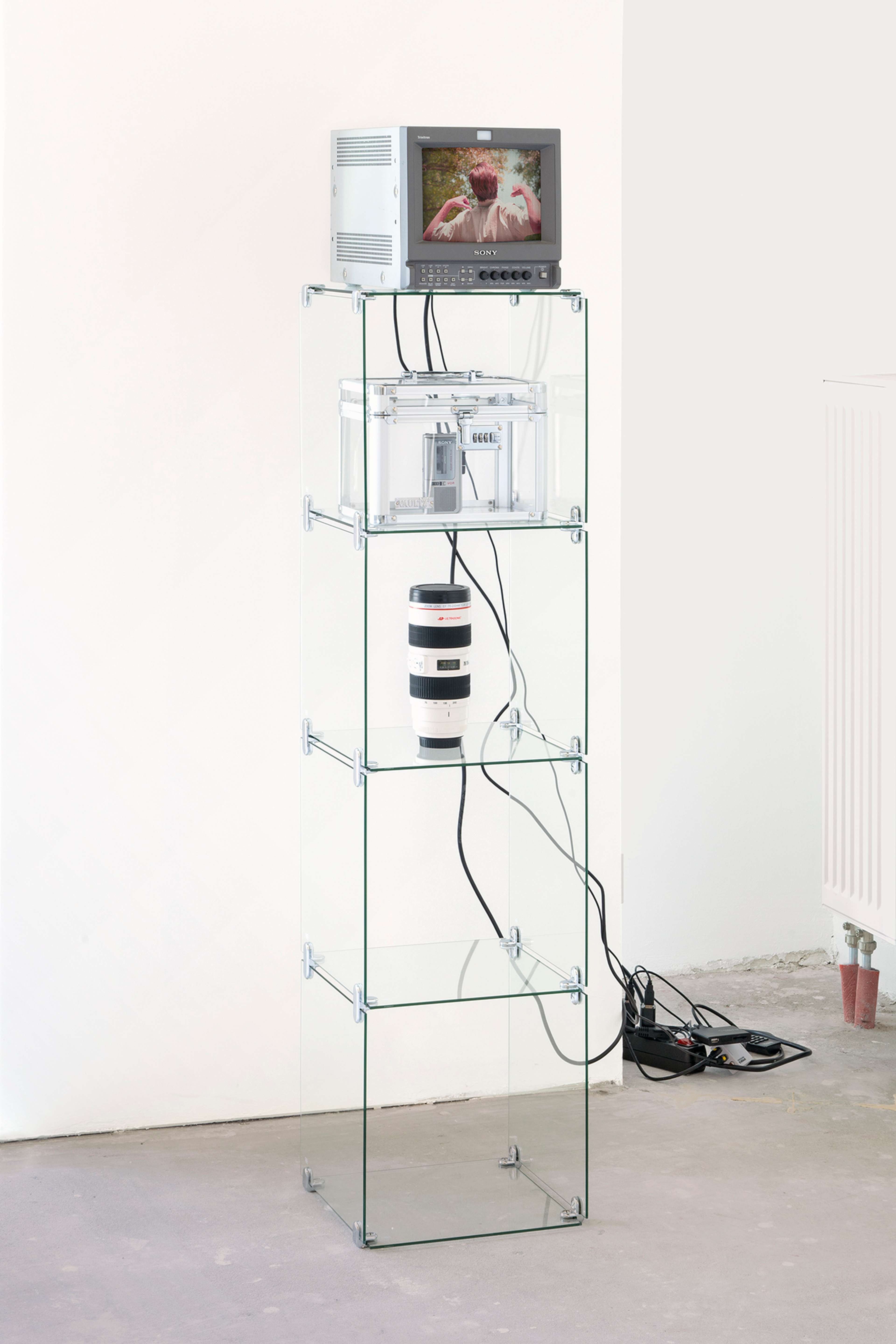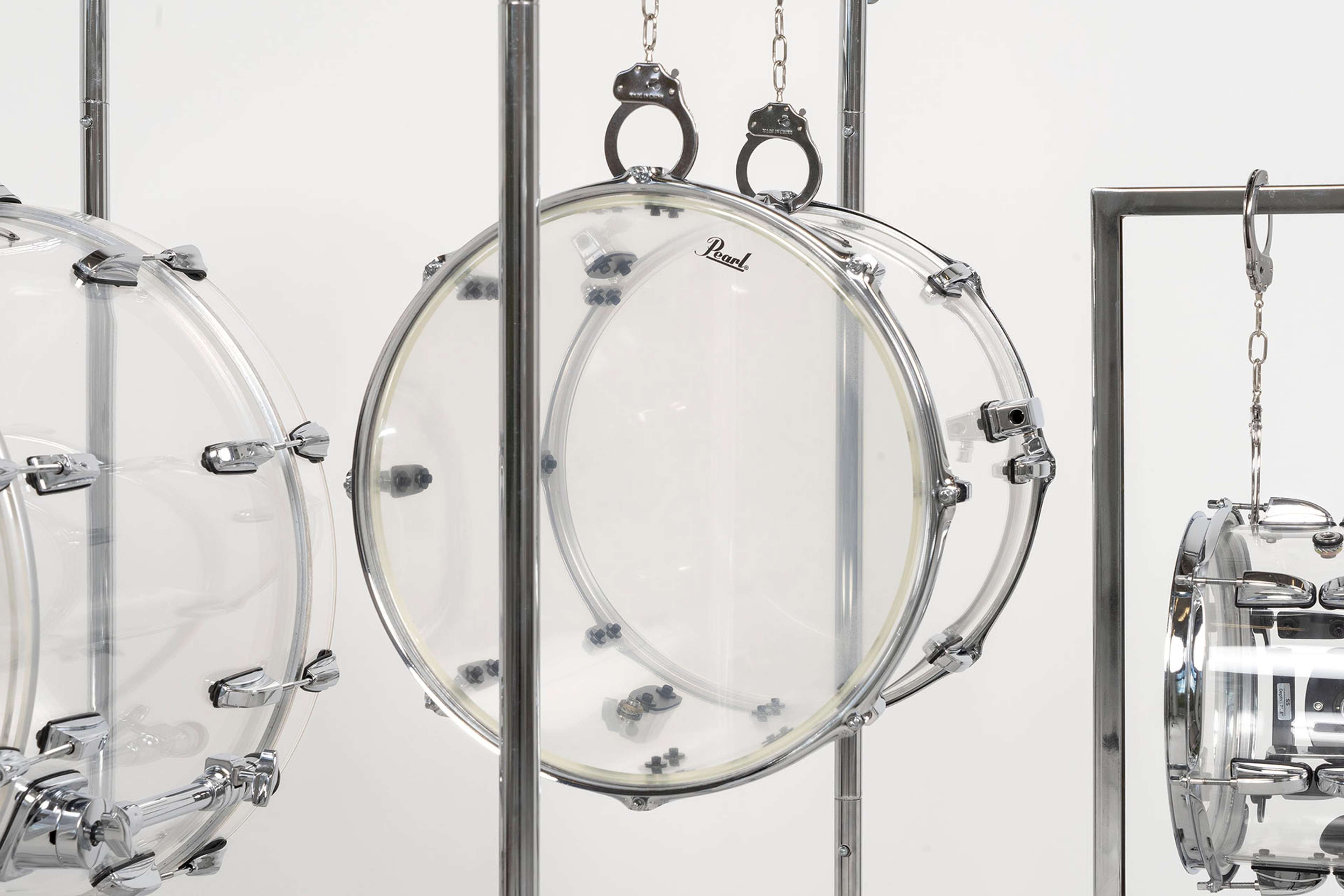Kayode Ojo featured in CAP 74204 Magazine
Kayode Ojo
by Fabio Cherstich
June 2021

Kayode Ojo (1990, Cookeville, USA) is an American conceptual artist who combines kitsch and glamour, photography and sculpture, theatrical performance and the readymade, with sinister irony. He is interested in mass-produced objects, design and fashion, jewellery, fake crystals, furniture and fabric. Not to mention big-name clothing that he drapes over fragile stands which act as mannequins in his spaces/exhibits, frozen and sparkling. The human body is entirely absent or only hinted at in Ojo’s work. If there, it is only partially glimpsed or implied in the signs left of its passing, as is the case in his best-known photo series, shots of the afterparties that follow art events. In these photos, the Sweetwater gallery in Berlin is overtaken by “Up to Here” (2021), a large-scale installation consisting of eight individual chandeliers, strung across two separate chains to form an elegant neckline. The work’s title is a sort of double-entendre, referencing both the angry refrain “I’ve had it up to here!” as well as instructions for shaving a beard, ‘up to here’ with the neck framed between thumb and index finger. There exists a hierarchy between these two chains, the lower one supports five light five-candle chandeliers with a plastic shine, and the upper one three weighty chandeliers containing hundreds of crystal balls, making a rainbow sparkle.
In “I put all of my energy into this tower” (2021), Ojo disassembled a vintage camera and placed a single part in each of the five mailboxes hanging on the wall.

At first glance, it appears that the camera is a Hasselblad 1600F, a classic Swedish camera from the late ’40s, but upon closer inspection it is a Kiev 88, the poorly-functioning Soviet copy from the ’80s. Each piece - lens, body, cartridge, viewfinder - is positioned between mirrors, allowing examination from every angle. References to contemporary art history abound: the mailboxes undoubtedly form a sort of readymade Donald Judd, while the deconstructed camera makes for
a sculptural version of a Christopher Williams photograph. This work takes its title from “High Rise”, the J.G. Ballard novel that was adapted into a 2015 film, which tells the story of a residential tower sealed off from society and whose inhabitants descend into madness and anarchy.
In Kayode Ojo’s work, minimalism mixes with glamour. There are no colors, just black and white and silver, as in “Vaterdrum, Mutterdrum, Michdrum” (2021), a four-part work consisting of three transparent drums, representing father, mother and child, alongside a copy of Georges Simenon’s “The Glass Cage”, the story of a proof-reader who works in a glass room, overcome by psychosis and memories of childhood. Each of the drums is suspended with a set of roleplay handcuffs, hanging onto their sturdy metal frames. The work’s title is in broken half-German/half-English,
its intention clear but its execution misguided. In the exhibition, the mother and father (“Mutterdrum and Vaterdrum”) are installed near the front of the gallery, immediately announcing their presence in the space, while the child (“Michdrum”, ‘me-drum’) is hidden behind a column, not visible until visitors have thoroughly inspected the gallery.


